Luxury Temporary Living: High-Quality Container Houses by Lida Group Transform Worker Dormitory Expectations with Prefab Amenities
2025-Aug-22 16:24:09
By Admin
1. Introduction
For decades, worker dormitories have been synonymous with bare-bones functionality—cramped quarters, shared facilities, and minimal comfort, viewed merely as a necessary expense for housing laborers during construction, mining, or infrastructure projects. This perception has perpetuated a cycle where workers endure subpar living conditions, leading to low morale, high turnover, and reduced productivity. However, as industries recognize the link between worker well-being and operational success, a new standard is emerging: luxury temporary living.
Lida Group, a pioneer in prefabricated building solutions, is at the forefront of this transformation with its high-quality container houses. These innovative structures reimagine worker dormitories by integrating premium prefab amenities, sophisticated design, and thoughtful comforts, elevating temporary housing from a basic necessity to a space that enhances quality of life. This article explores how Lida Group’s container houses are reshaping expectations, from their luxury features and modular design to real-world impact and future possibilities.
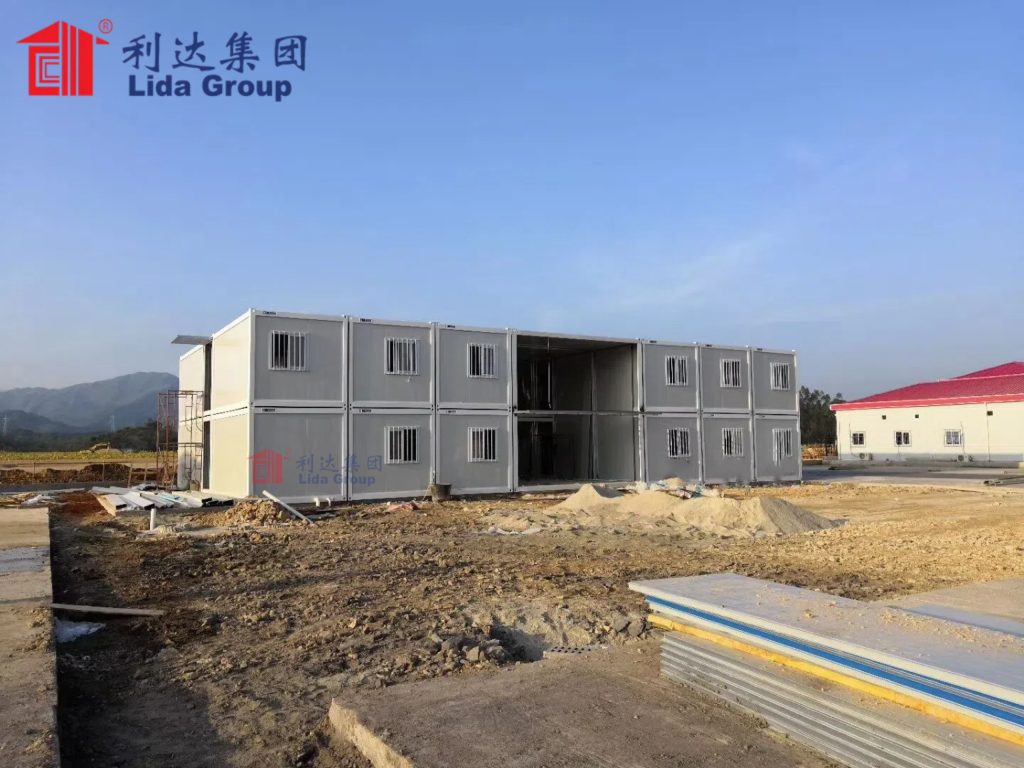
2. The Evolution of Worker Dormitories: From Basic to Luxury
2.1. The Limitations of Traditional Dormitories
Traditional worker dormitories are often characterized by:
- Cramped Spaces: Overcrowded rooms with minimal square footage per worker, often with 4-6 people sharing a single room.
- Shared, Subpar Facilities: Communal bathrooms and kitchens that are poorly maintained, lacking privacy and hygiene.
- Limited Amenities: Few or no recreational spaces, poor lighting, inadequate ventilation, and basic (or no) furniture.
- Temporary Feel: Flimsy construction that feels impermanent, contributing to a sense of displacement among workers.
These conditions not only affect worker satisfaction but also impact health—through increased risk of illness from overcrowding—and productivity, as fatigued or stressed workers are less efficient. In industries struggling with labor shortages, such dormitories exacerbate retention issues, driving up recruitment and training costs.
2.2. The Shift Toward Worker Well-Being
Changing workforce expectations and research on employee satisfaction have prompted a shift in how organizations view worker accommodation. Studies show that improved living conditions lead to:
- Higher Morale: Workers who feel valued are more engaged and motivated.
- Lower Turnover: Reduced rates of workers leaving mid-project, saving on recruitment costs.
- Better Health: Improved hygiene and space reduce illness, lowering absenteeism.
- Increased Productivity: Well-rested, comfortable workers perform better and are safer on the job.
This has created demand for temporary housing that balances functionality with luxury—a concept once considered contradictory. Lida Group’s container houses meet this demand by proving that temporary living can be both practical and upscale.
2.3. The Role of Prefab Technology in Luxury Temporary Housing
Prefabricated construction, with its precision engineering and off-site manufacturing, is uniquely suited to deliver luxury in temporary housing. Unlike traditional on-site construction, which is limited by time, labor, and weather, prefab allows for:
- Consistent Quality: Factory-controlled production ensures high standards for materials and finishes.
- Customization: Modular designs can be tailored to include premium amenities without sacrificing efficiency.
- Speed: Rapid assembly on-site means luxury housing can be deployed as quickly as basic dormitories.
Lida Group leverages these advantages to create container houses that rival permanent luxury apartments in comfort, while retaining the portability and cost-effectiveness of temporary structures.
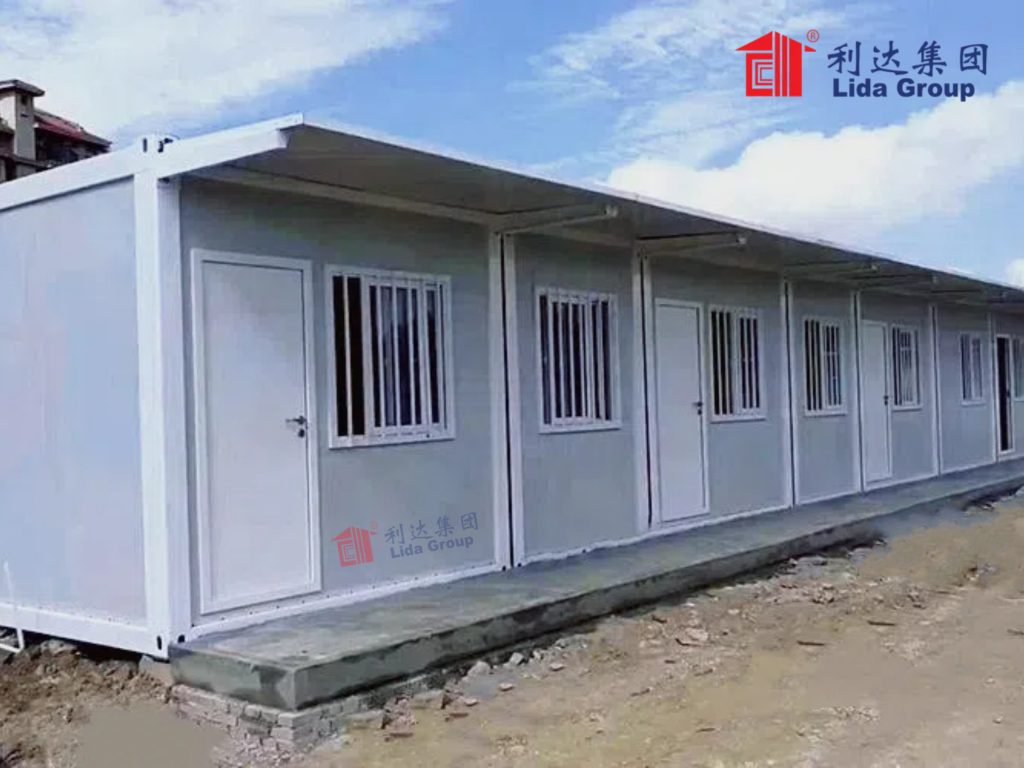
3. Lida Group’s High-Quality Container Houses: The Foundation of Luxury
3.1. Premium Construction and Materials
Lida Group’s container houses are built to exceed expectations, starting with high-quality materials and construction:
- Reinforced Steel Frames: Using heavy-gauge, galvanized steel ensures durability and stability, while reducing noise transmission between units.
- Insulation: Advanced insulation (polyurethane foam with a thermal resistance of R-25 or higher) maintains comfortable temperatures year-round, reducing reliance on heating and cooling.
- Flooring: Options include luxury vinyl planks, engineered hardwood, or polished concrete—all durable, easy to clean, and aesthetically pleasing.
- Walls and Ceilings: Finished with moisture-resistant drywall, painted with low-VOC (volatile organic compound) paints, and often accented with wood paneling or textured wallpaper for a upscale feel.
- Windows and Doors: Large, energy-efficient windows with double glazing let in natural light and reduce noise, while solid-core interior doors and steel exterior doors provide security and privacy.
These features create a foundation that feels permanent and luxurious, despite the container’s temporary purpose.
3.2. Modular Design for Flexible Luxury
The modular nature of container houses allows for flexible layouts that cater to luxury living:
- Unit Sizes: From single-occupancy studios (25-30 sq.m) to multi-bedroom family units (60-80 sq.m), ensuring space and privacy.
- Open Floor Plans: Combined living and sleeping areas with modern flow, making units feel spacious.
- Stackable and Connectable: Units can be stacked to form multi-story buildings or connected to create larger spaces, such as shared lounges or recreation areas.
- Custom Configurations: Clients can choose layouts with walk-in closets, en-suite bathrooms, or private balconies, tailoring units to worker needs.
This flexibility ensures that luxury is not a one-size-fits-all concept but can be adapted to project requirements and worker demographics.
3.3. Integration of Smart Home Technology
Lida Group’s container houses embrace smart technology to enhance comfort and convenience:
- Smart Thermostats: Programmable systems that learn worker preferences, optimizing temperature and energy use.
- Lighting Controls: Dimmable LED lighting with smart switches or voice activation, allowing workers to adjust ambiance.
- Security Systems: Keyless entry (via RFID cards or mobile apps) and CCTV integration for safety, with the option for individual unit alarms.
- Energy Monitoring: Dashboards that track electricity and water use, promoting sustainability while giving workers control over their consumption.
These technologies, common in luxury homes, bring a sense of modernity and control to temporary living.
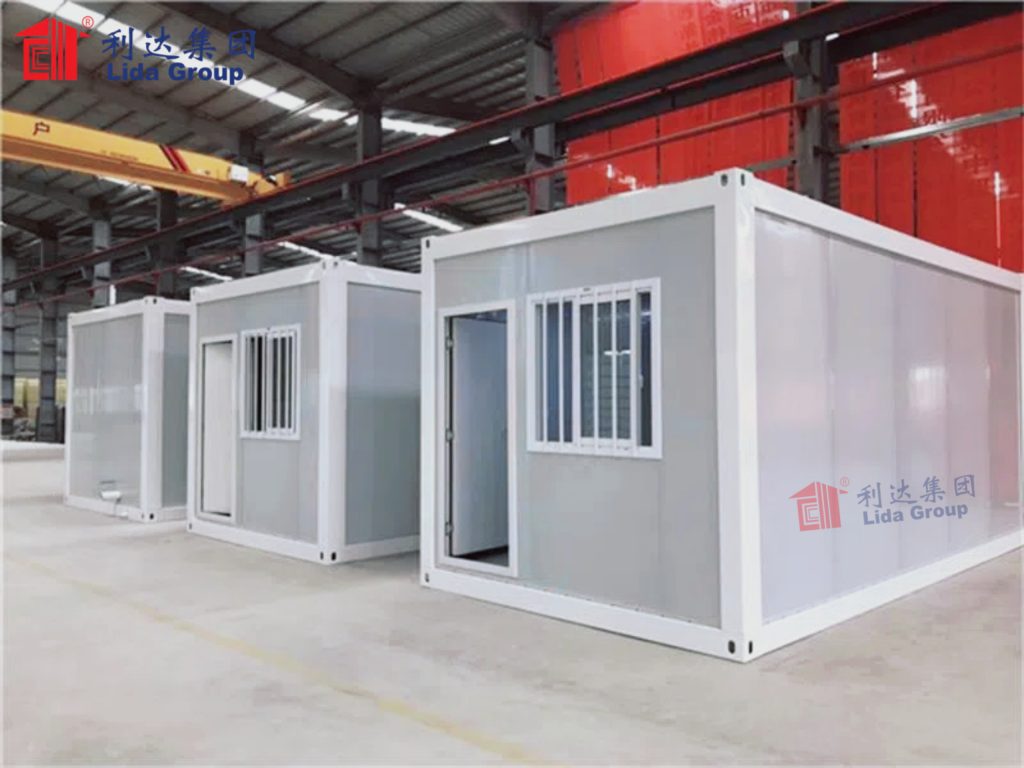
4. Prefab Amenities: Redefining Luxury in Worker Dormitories
4.1. Premium Bathroom and Kitchen Facilities
Lida Group’s container houses elevate daily routines with high-end amenities in key spaces:
- En-suite Bathrooms: Many units include private bathrooms with:
-
- Rainfall showerheads and glass enclosures.
-
- Water-saving toilets and sinks with modern fixtures (chrome or matte black finishes).
-
- Heated towel racks and built-in storage for toiletries.
-
- Ventilation fans with humidity sensors to prevent mold.
- Kitchenettes or Full Kitchens: Depending on unit size, kitchens feature:
-
- Stainless steel appliances (microwaves, mini-fridges, induction cooktops, or even dishwashers).
-
- Granite or quartz countertops with under-cabinet lighting.
-
- Custom cabinetry with soft-close doors and ample storage.
-
- Compact, efficient layouts that maximize counter space.
These features eliminate the need for shared facilities, enhancing privacy and convenience.
4.2. Recreational and Wellness Spaces
Luxury temporary living extends beyond individual units to shared amenities that promote relaxation and community:
- Fitness Centers: Equipped with cardio machines, weights, and yoga mats, often with mirrored walls and sound systems.
- Lounge Areas: Comfortable seating (sofas, armchairs), flat-screen TVs, bookshelves, and coffee bars, designed for socializing or quiet relaxation.
- Outdoor Spaces: Landscaped patios, rooftop decks, or courtyards with seating, planters, and even fire pits or outdoor kitchens.
- Wellness Rooms: Quiet spaces for meditation, prayer, or massage, with calming lighting and soundproofing.
These areas provide workers with opportunities to unwind, exercise, and connect with colleagues, fostering a sense of community.
4.3. Additional Luxury Features
Lida Group’s container houses include thoughtful touches that elevate the living experience:
- Climate Control: Ductless mini-split HVAC systems that allow individual temperature control in each unit, with air purification filters.
- Laundry Facilities: On-site laundry rooms with high-efficiency washers and dryers, or even in-unit compact laundry appliances.
- High-Speed Internet: Fiber-optic or satellite connections with Wi-Fi 6, ensuring reliable access for work, communication, and entertainment.
- Storage Solutions: Built-in wardrobes, under-bed storage, and closet organizers to maximize space and reduce clutter.
- Blackout Curtains: For shift workers, ensuring quality sleep regardless of daylight hours.
These amenities, once considered indulgences in temporary housing, are now standard in Lida Group’s luxury container houses.
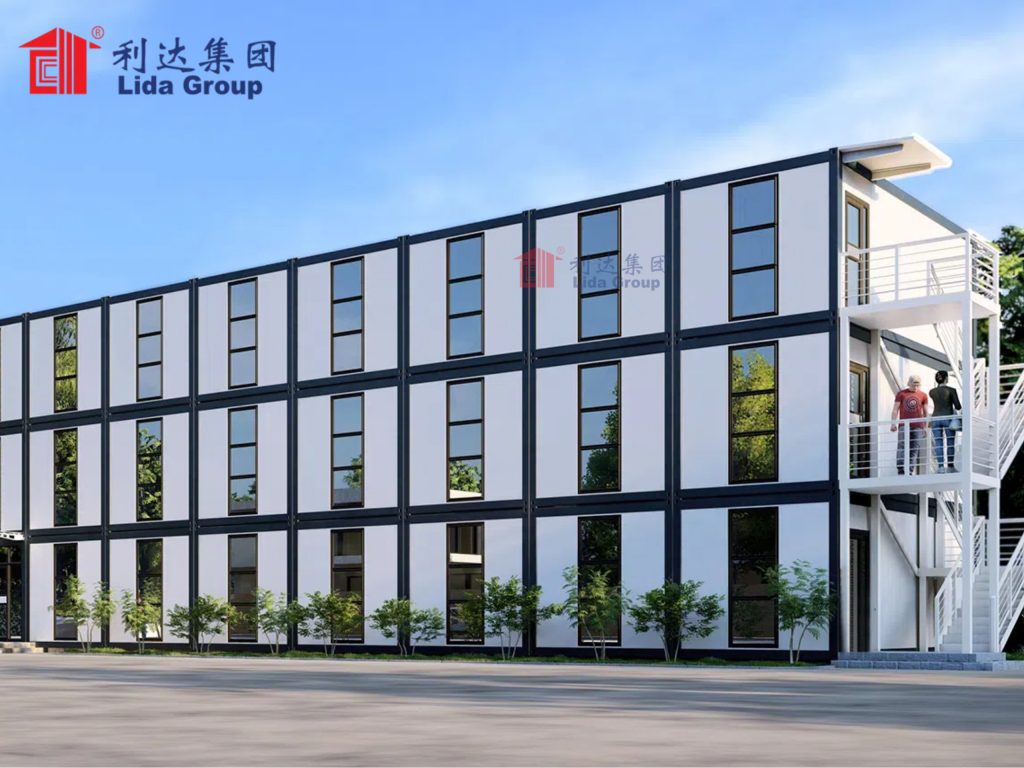
5. Benefits of Luxury Temporary Living by Lida Group
5.1. Improved Worker Satisfaction and Retention
The most significant benefit is enhanced worker well-being. Workers in Lida Group’s luxury container houses report higher satisfaction with their living conditions, leading to:
- Lower Turnover: Studies of projects using these dormitories show a 30-40% reduction in worker departures compared to traditional housing.
- Better Engagement: Workers feel valued by their employers, increasing loyalty and commitment to the project.
- Positive Word of Mouth: Satisfied workers recommend the company to peers, easing recruitment challenges.
For example, a construction company in the Gulf region reported a 35% drop in turnover after switching to Lida Group’s luxury container houses, saving over $200,000 in recruitment and training costs annually.
5.2. Increased Productivity and Safety
Luxury living conditions directly impact on-the-job performance:
- Better Sleep: Comfortable beds, quiet environments, and climate control lead to more restful sleep, reducing fatigue-related accidents.
- Reduced Stress: Access to amenities like fitness centers and lounges helps workers manage stress, improving focus and decision-making.
- Healthier Lifestyles: On-site kitchens encourage better nutrition, while fitness facilities promote exercise, reducing illness and absenteeism.
A mining project in Australia found that after implementing Lida Group’s dormitories, worker productivity increased by 15%, and safety incidents dropped by 20%.
5.3. Cost-Effectiveness in the Long Term
While luxury container houses have a higher upfront cost than basic dormitories, they deliver long-term savings:
- Lower Turnover Costs: Reduced recruitment, training, and onboarding expenses.
- Increased Productivity: Higher output and fewer delays offset initial investment.
- Durability: High-quality construction extends the lifespan of the units, allowing them to be reused across multiple projects.
- Brand Reputation: Companies known for providing luxury accommodation attract top talent, reducing competition for skilled workers.
ROI analysis for most projects shows that the initial investment is recouped within 12-18 months through these savings.
5.4. Flexibility and Sustainability
Lida Group’s luxury container houses retain the practical advantages of prefab construction:
- Rapid Deployment: Units are manufactured off-site and assembled in weeks, minimizing project delays.
- Reusability: After a project ends, units can be disassembled, transported, and reused at new sites, reducing waste.
- Sustainability: Use of recycled materials, energy-efficient systems, and low-VOC finishes aligns with corporate sustainability goals.
- Scalability: Additional units can be added quickly if the workforce expands, avoiding housing shortages.
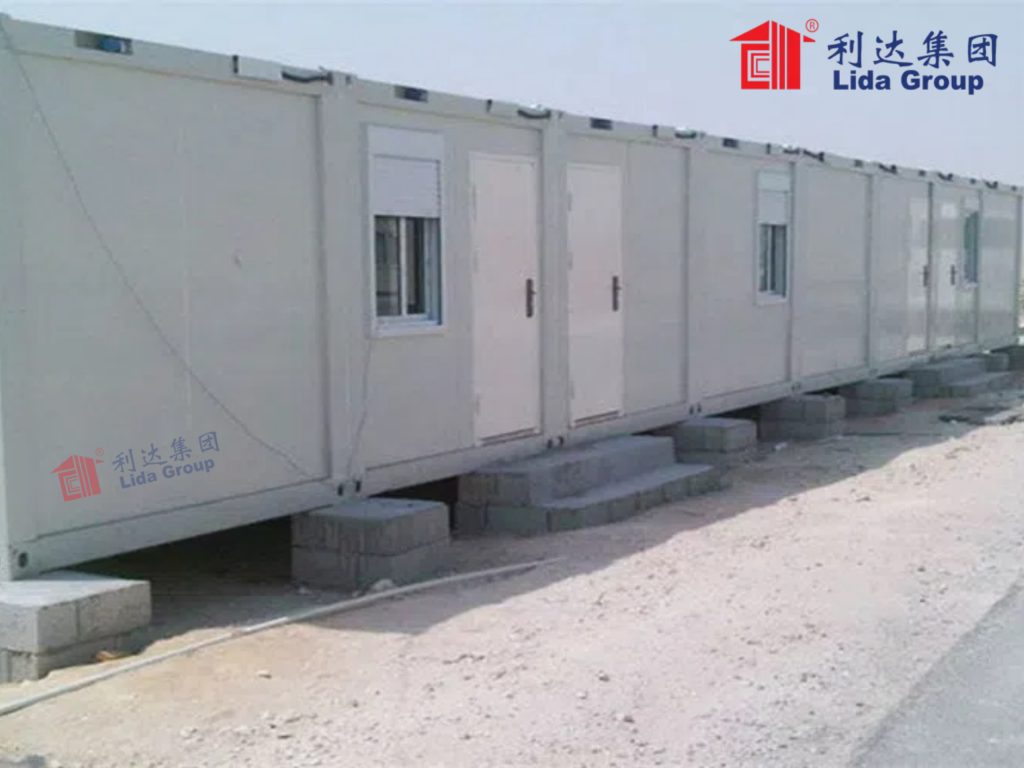
6. Real-World Applications: Luxury Container Houses in Action
6.1. Offshore Energy Project in the North Sea
An energy company operating an offshore wind farm in the North Sea needed to house 100 technicians for a 2-year project. Workers faced long shifts in harsh conditions, making comfortable accommodation critical for retention.
Lida Group supplied 50 luxury container houses, including 40 single-occupancy studios and 10 two-bedroom units for workers with families. Each unit featured en-suite bathrooms, kitchenettes with induction cooktops, and private balconies. Shared amenities included a fitness center, lounge with a cinema area, and an outdoor deck with seating.
The company reported zero turnover during the project—compared to a 25% turnover rate on previous projects with traditional dormitories. Technicians praised the quiet, comfortable units and access to fitness facilities, noting that better rest improved their performance during night shifts.
6.2. Urban Construction Project in Europe
A construction firm building a luxury hotel in a major European city needed to house 150 workers near the city center, where space was limited. The company wanted accommodation that reflected the quality of the project they were building.
Lida Group installed a 3-story complex of container houses, featuring open-plan studios with hardwood floors, en-suite bathrooms, and smart home technology. Shared amenities included a rooftop garden, a communal kitchen with a dining area, and a co-working space with high-speed internet.
Workers appreciated the proximity to the job site (5-minute walk) and the upscale feel of the units, which included blackout curtains for day sleepers. The company noted improved punctuality and a 20% reduction in sick days, attributing the changes to better living conditions.
6.3. Mining Project in South America
A mining company in Chile sought to improve worker retention at a remote site, where isolation and poor living conditions had historically led to high turnover. The company invested in Lida Group’s luxury container houses to house 200 workers.
The camp included single and double-occupancy units with private bathrooms, mini-kitchens, and walk-in closets. Shared facilities featured a large lounge with a pool table and gaming consoles, a fitness center with personal trainers, and a dining hall serving restaurant-quality meals. The site also had high-speed internet, allowing workers to video-call family daily.
Turnover dropped by 40% within six months, and the company reported a 12% increase in productivity. Workers noted that the accommodation felt “like a hotel,” making the remote location more bearable.
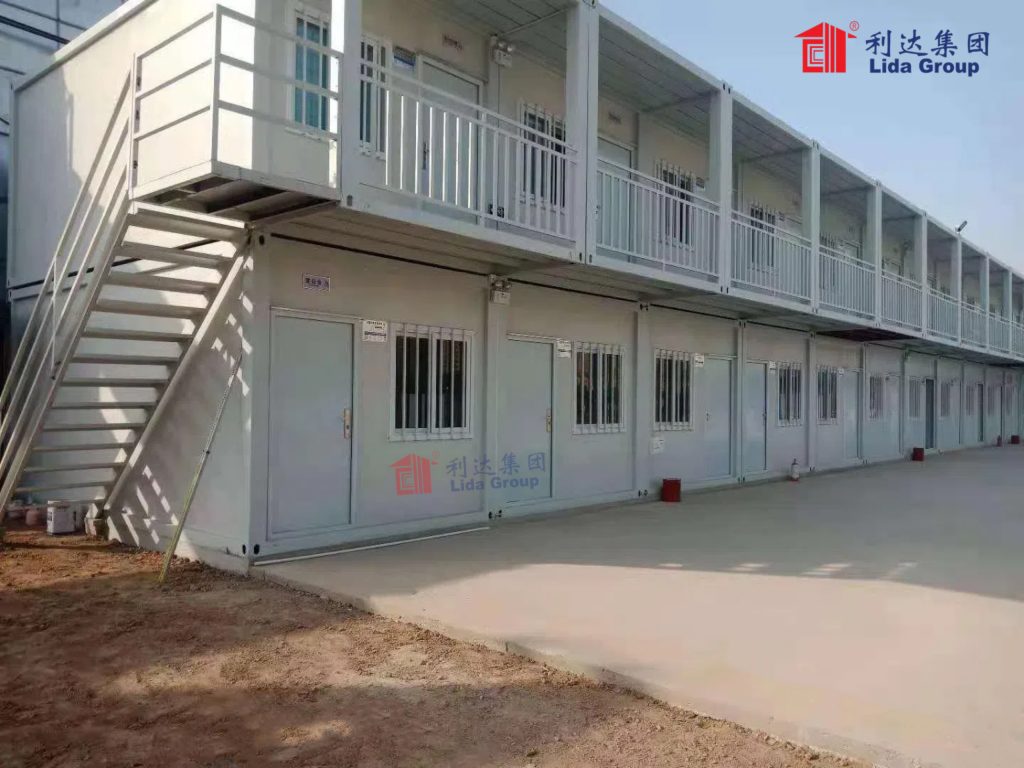
7. Challenges and Solutions in Implementing Luxury Temporary Housing
7.1. Balancing Cost and Luxury
The higher upfront cost of luxury container houses can be a barrier for some organizations. Lida Group addresses this with:
- Tiered Packages: Offering different levels of luxury (e.g., “premium” vs. “deluxe”) to match budgets, with core comforts included in all tiers.
- Long-Term Leasing Options: Allowing companies to spread costs over the project duration, reducing upfront capital expenditure.
- Customization: Enabling clients to prioritize amenities (e.g., focusing on private bathrooms over a fitness center) to control costs.
- ROI Projections: Providing detailed analyses showing long-term savings from reduced turnover and increased productivity.
7.2. Logistics of Transporting Luxury Units
Luxury features (e.g., larger windows, built-in appliances) can make units heavier or bulkier, complicating transportation to remote sites. Solutions include:
- Modular Components: Breaking down large amenities (e.g., fitness equipment, kitchen cabinets) for transport, then reassembling on-site.
- Lightweight Materials: Using high-strength, lightweight materials (e.g., aluminum fixtures, composite countertops) to reduce unit weight.
- Specialized Transport: Partnering with logistics companies experienced in moving oversized prefab structures, including using flatbed trucks or shipping containers for overseas projects.
7.3. Maintenance of Luxury Amenities in Remote Areas
Maintaining premium features like smart technology or fitness equipment in remote locations with limited access to technicians is challenging. Lida Group mitigates this by:
- Durable Equipment Selection: Choosing commercial-grade, low-maintenance appliances and fixtures designed for heavy use.
- Remote Monitoring: Equipping smart systems with remote diagnostics, allowing technicians to troubleshoot issues without being on-site.
- On-Site Training: Training camp staff to perform basic maintenance (e.g., filter changes, minor repairs) to reduce reliance on external experts.
- Preventive Maintenance Plans: Scheduling regular check-ups for high-value amenities, preventing breakdowns before they occur.
7.4. Adapting to Diverse Worker Preferences
Workers from different cultural backgrounds or with varying needs may have different expectations for luxury. Lida Group solves this by:
- Cultural Customization: Offering features tailored to regional preferences (e.g., prayer rooms in Middle Eastern projects, communal cooking spaces in Asian projects).
- Flexible Layouts: Providing options for family units, single rooms, or shared (but spacious) accommodations to suit different living arrangements.
- Feedback Systems: Collecting input from workers during the design phase to ensure amenities meet their needs and preferences.
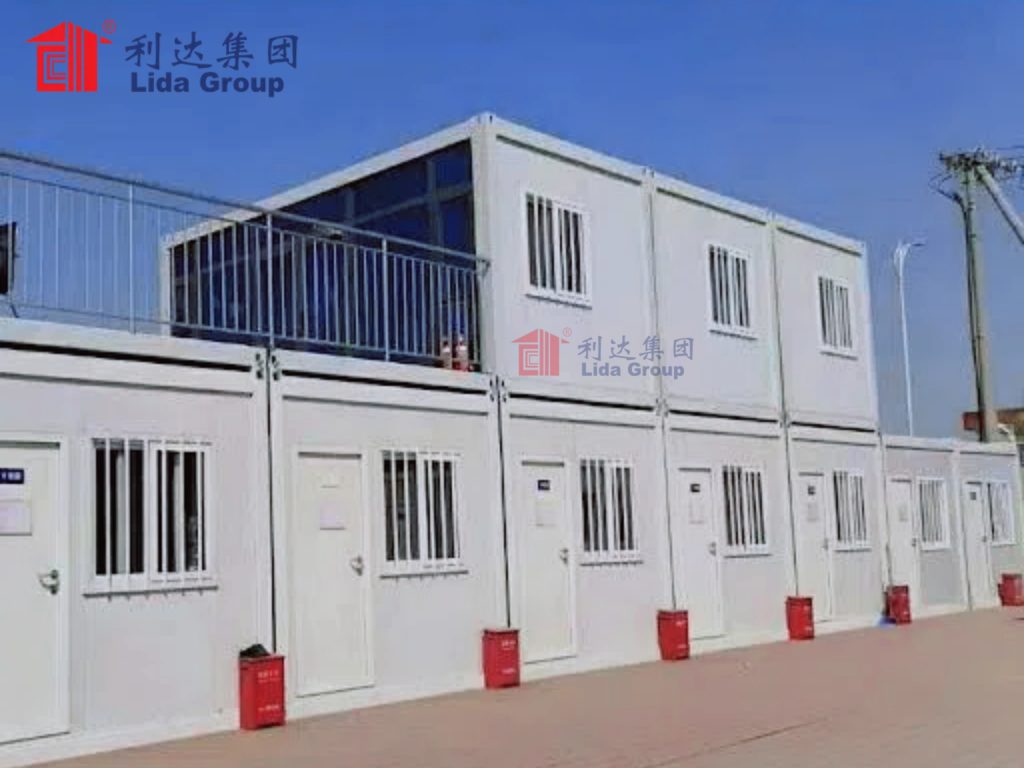
8. Future Trends in Luxury Temporary Living
8.1. Sustainable Luxury
Future container houses will integrate luxury with even greater sustainability:
- Solar-Powered Amenities: Rooftop solar panels to power smart systems, fitness equipment, and kitchen appliances, reducing carbon footprints.
- Eco-Friendly Materials: Use of recycled wood, bamboo flooring, and plant-based finishes that maintain luxury while reducing environmental impact.
- Water Conservation: Smart showers and toilets with water recycling systems, without compromising comfort.
- Carbon-Neutral Operations: Offset remaining emissions through partnerships with reforestation projects, appealing to eco-conscious workers.
8.2. Personalized Living Experiences
Advancements in modular design will allow for greater personalization:
- Customizable Interiors: Workers can choose finishes (paint colors, flooring, furniture) via an app, creating a sense of ownership.
- Smart Personalization: AI-driven systems that adjust lighting, temperature, and even music based on individual preferences.
- Flexible Spaces: Convertible furniture (e.g., beds that fold into walls, tables that expand) allowing workers to adapt their units for work, relaxation, or entertaining.
8.3. Integration of Wellness Technology
Wellness will become even more central to luxury temporary living:
- Health Monitoring: Beds with built-in sensors to track sleep quality, and fitness centers with biometric equipment that syncs to personal health apps.
- Mental Health Spaces: Virtual reality rooms for stress reduction, or soundproof meditation pods with guided mindfulness sessions.
- **Air and Water
Purification Systems: Advanced air purifiers with HEPA filters and UV-C light to remove pollutants, and water filtration systems that deliver mineral-rich, taste-free drinking water—critical for remote areas with poor water quality.
- Circadian Rhythm Lighting: Smart lighting that mimics natural daylight patterns, helping shift workers regulate their sleep-wake cycles and reduce fatigue.
8.4. Community and Social Connectivity
Future luxury temporary housing will emphasize building stronger communities:- Co-Working and Learning Spaces: Designated areas with high-speed internet, video conferencing equipment, and study materials, allowing workers to upskill or collaborate outside of work hours.
- Social Events Infrastructure: Built-in spaces for movie nights, cultural celebrations, or team-building activities, with flexible seating and audio-visual systems.
- Digital Community Platforms: Apps that connect workers, facilitating ride-sharing, meal exchanges, or hobby groups, fostering a sense of belonging even in temporary settings.
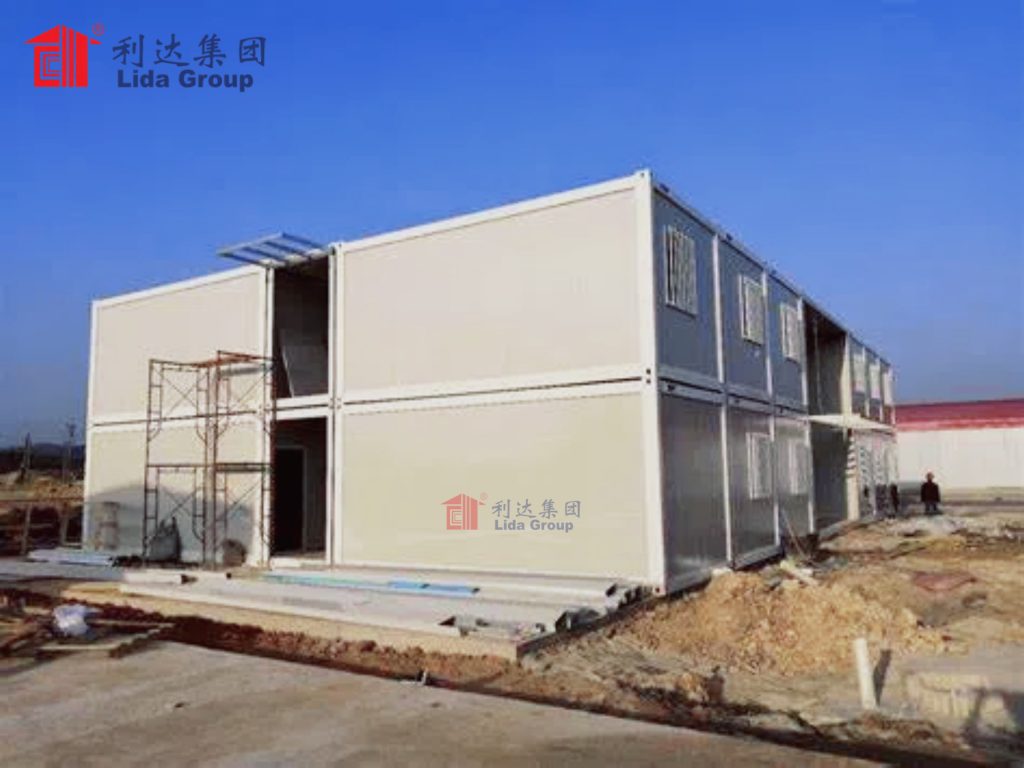
9. Conclusion
Lida Group’s high-quality container houses have redefined what is possible in worker dormitories, transforming temporary living from a utilitarian necessity to a luxury experience that prioritizes worker well-being, comfort, and dignity. By integrating premium materials, smart technology, and thoughtfully designed amenities—from en-suite bathrooms and fitness centers to high-speed internet and wellness spaces—these structures have shattered the stereotype of cramped, impersonal worker housing.The benefits of this approach are clear: improved worker satisfaction and retention, increased productivity, reduced operational costs, and enhanced safety. Real-world applications across offshore energy, urban construction, and mining projects demonstrate that luxury temporary living is not just a perk but a strategic investment in project success. Workers in these dormitories report higher morale, better health, and greater loyalty, directly contributing to smoother operations and better outcomes.Challenges such as cost, logistics, and maintenance are effectively addressed through tiered packages, modular design, and innovative solutions, making luxury accessible even in remote or budget-constrained projects. By adapting to diverse cultural preferences and worker needs, Lida Group ensures that luxury is inclusive and relevant across global contexts.Looking ahead, the future of luxury temporary living will be marked by even greater sustainability, personalization, and focus on wellness. Solar integration, customizable interiors, and advanced health-monitoring technology will further elevate these spaces, aligning them with evolving worker expectations and global trends toward sustainability and well-being.In essence, Lida Group’s container houses represent a paradigm shift in how industries value their workforce. By recognizing that comfortable, dignified living conditions are integral to productivity and success, these structures are not just housing—they are a testament to the importance of investing in people. As the demand for skilled labor grows and competition intensifies, luxury temporary living will no longer be an option but a standard, with Lida Group leading the way in redefining excellence in worker accommodation.

Related news
-
Typhoon-Resistant Housing: Container Worker Dormitories Feature Lida Group's Reinforced Prefab Building Structures for Coastal Projects
2025-08-22 11:59:49
-
Sustainable Labor Camps: Lida Group's High-Quality Container Houses Reduce Carbon Footprint 35% with Solar-Ready Prefab Roofs
2025-08-22 13:36:15
-
Secure Workforce Solutions: Lida Group's Container Worker Dormitories Incorporate Access Control in Prefab Building Designs
2025-08-21 15:22:24
contact us
- Tel: +86-532-88966982
- Whatsapp: +86-13793209022
- E-mail: sales@lidajituan.com


